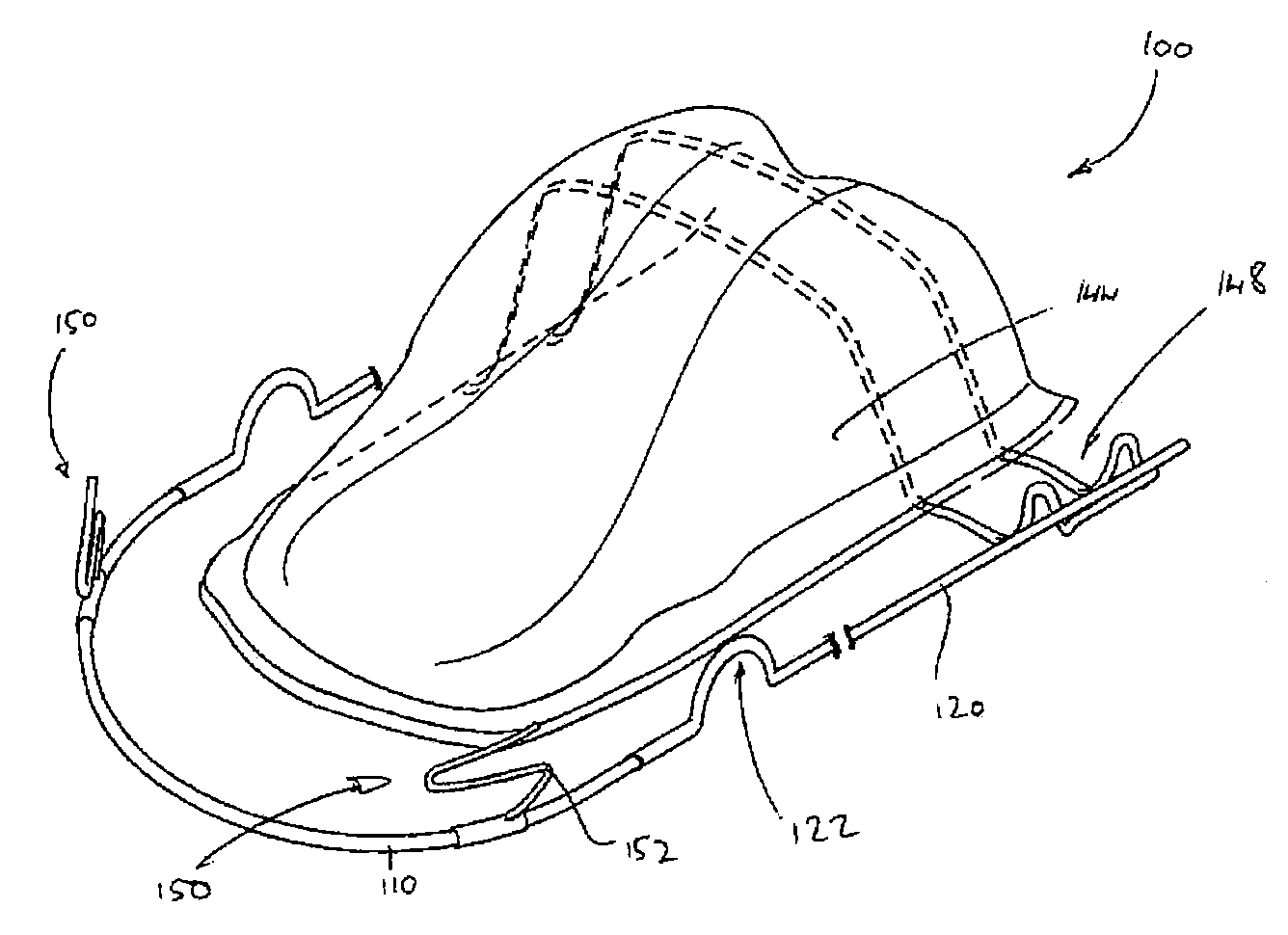Dental Retainer
a technology of retainers and teeth, applied in dental tools, dental surgery, medical science, etc., can solve the problems of affecting the root of teeth, affecting the effect of teeth roots, and affecting the use of labial bow materials
- Summary
- Abstract
- Description
- Claims
- Application Information
AI Technical Summary
Benefits of technology
Problems solved by technology
Method used
Image
Examples
Embodiment Construction
[0134]With reference to the above drawings, a dental retainer according to the invention is generally indicated by the numeral 100.
[0135]In one embodiment now described there is provided a dental retainer 100, suitable for use in retaining a user's teeth (not shown) in position, said dental retainer 100 comprising a curved labial bow member 110 suitable for abutment against the labial side of a row of teeth of a user, said bow member 110 comprising reinforcing fibers 115 and a polymer matrix 117, as shown in FIG. 20 and as disclosed in PCT publication number WO 2004 / 111112, which is incorporated herein by reference. The bow member 110 is envisaged as being circular in cross section, although it could also be of a flattened shape in cross section., and is configured and dimensioned to extend operationally from a first end 112a to a second end 112b along the labial side of a user's teeth from at least a pre-molar to a pre-molar on an opposed side of a user's mouth. The bow member 110 ...
PUM
 Login to View More
Login to View More Abstract
Description
Claims
Application Information
 Login to View More
Login to View More - R&D
- Intellectual Property
- Life Sciences
- Materials
- Tech Scout
- Unparalleled Data Quality
- Higher Quality Content
- 60% Fewer Hallucinations
Browse by: Latest US Patents, China's latest patents, Technical Efficacy Thesaurus, Application Domain, Technology Topic, Popular Technical Reports.
© 2025 PatSnap. All rights reserved.Legal|Privacy policy|Modern Slavery Act Transparency Statement|Sitemap|About US| Contact US: help@patsnap.com



